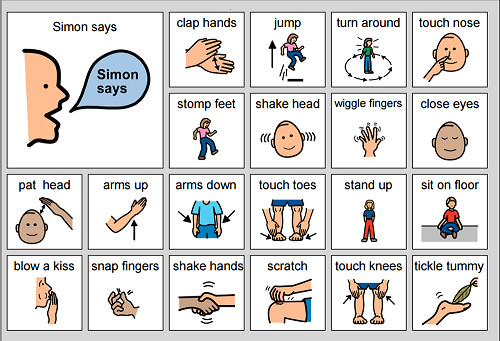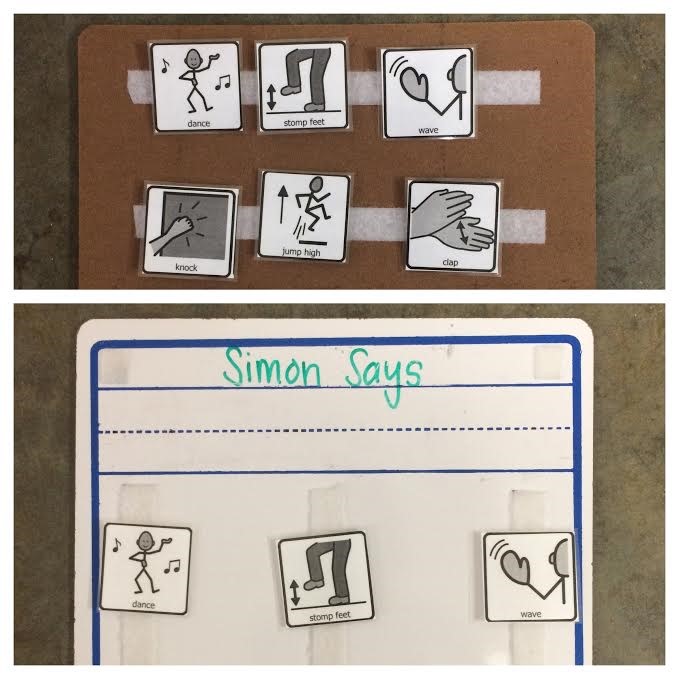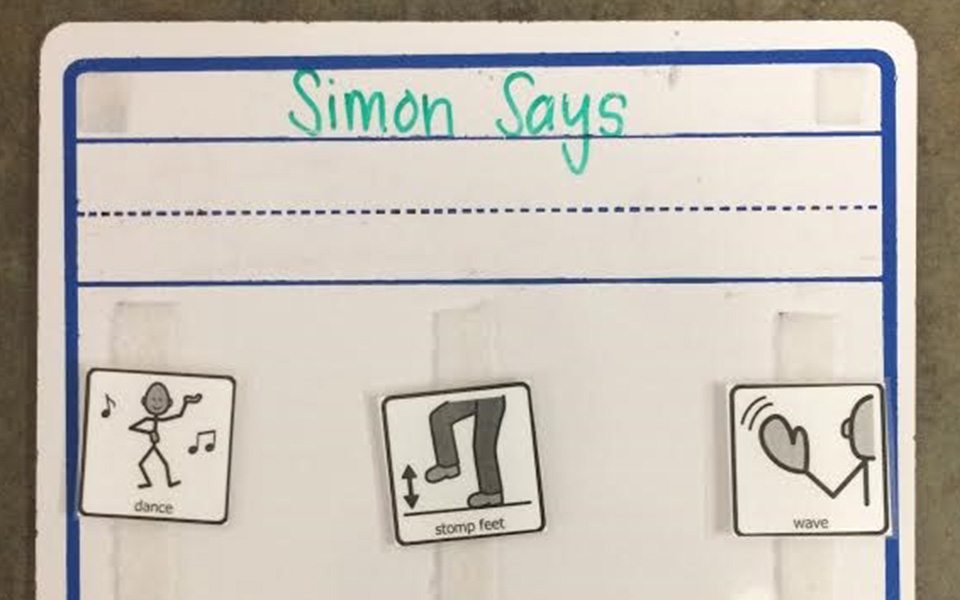Play therapy is an important part of any therapy program and some of our most beloved childhood games can have therapeutic benefits that we didn’t even know about! Looking for a simple and fun activity that requires no materials? “Simon Says” is the perfect game to address a variety of skills to help with your child’s development! That’s why “Simon Says” is out May Game of the Month!
1. Developing Body Awareness and Motor Development
This game is an excellent way for a child to practice improving his or her body awareness. Your child will have the opportunity to see a demonstrated body movement or sustained position, then he or she can replicate this action. Children with poor proprioceptive processing may struggle with imitating body movements. This game is a fun way to practice improving body awareness, while also incorporating other motor skills, including balance (e.g. “Simon says stand on one foot” or “Simon says do 10 jumping jacks”), bilateral coordination, and other gross motor tasks.
This game is also a simple way to practice learning and labeling body parts (e.g. “Simon Says touch your toes/ears/shoulders/nose”).
2. Developing Sportsmanship
Losing can be a difficult concept for children to understand and is a great skill to practice within the comforts and safety of home. Good sportsmanship takes time for children to develop and utilize when playing with peers. Instead of reinforcing a winner or loser, taking turns playing “Simon” is an easy way to re-direct the child back to the game, even if it did not work in their favor.
3. Following and Giving Directions
Simon Says is a great way to practice giving and following directions, as that is the basis of the game. Visual modeling (i.e. having the person who is “Simon” act out the directions as they say them) is a great way to support children in understanding the directions.
4. Developing Sequencing Skills
Increase the level of difficulty and work on sequencing while playing by adding in multi-step directions. Here are some examples:
- “Simon Says do jumping jacks then sit down”
- “Simon Says touch your nose before touching your belly”
- “Simon Says lookup, then run in place and finally do a silly dance.”
5. Learning to Use Past Tense Verbs
Simon Says is also a great way to work on both regular and irregular past tense verbs. After each round talk about the actions you just completed. It might sound something like this:
- “First I did jumping jacks. Then I sat down.”
- “I touched my nose and then touched my belly.”
- “I looked up, ran in place, and then did a silly dance.”
Ways to Modify for Better Play Therapy
If sequencing is not a goal your child is working on right now consider giving simple commands. Sometimes verbal directions can seem complex to a child. Consider giving a simple, 1 step command. For example: Instead of saying “Simon Says touch your nose and clap twice”, break these directions up. Say “Simon Says touch your nose.” “Simon Says clap twice.” This will give the child time to process one step at a time and follow directions successfully.
For children who are struggling with verbal communication, have trouble with word recall, tend to freeze up when being put on the spot, or who benefit from visual supports, a visual choice board is a great way to modify the game. Below are two examples of visual boards:


This whiteboard was modified with laminated pictures and velcro strips. On the back of the board, all the options are stored. This board could be used as visual support for sequencing or as a choice board.
About the Authors
Blog Post by Katie Fletcher, MS, OTR/L and Anna Housman, MS, CCC-SLP.
Katie received her Master’s in Occupational Therapy from Virginia Commonwealth University in 2013. As an undergraduate student at Meredith College, Katie discovered the career of occupational therapy working as an applied behavioral analysis therapist for children with autism. Katie has experience working with children with Autism, Asperger’s, ADD/ADHD, sensory processing disorders, learning disabilities, and motor planning disorders. She completed one of her graduate fieldwork placements at Emerge Pediatric Therapy, before returning as a pediatric Occupational Therapist in the winter of 2014. Katie has completed formal education with the Sensory Integration Certification Program (SIPT). She also completed courses with the Vital Links program, focusing on primary movement patterns and positioning in therapy, as well as, DIR/Floortime education, Interactive Metronome certification, training with the Child Adult Relationship Enhancement (CARE) approach, and more.
Anna is a North Carolina native, originally coming from Winston-Salem. She completed her undergraduate degree in Communication Sciences and Disorders at UNC-Greensboro in 2011 before moving on to complete her graduate degree in Speech-Language Pathology at UNC-Chapel Hill in 2013. Prior to joining Emerge, Anna worked in both Durham and Wake County Public Schools with students ranging from kindergartner to high school in mainstream and self-contained classrooms. During this time she worked largely with, and discovered her passion for, working with children on the Autism Spectrum.
For more information on our team and our accomplishments, check out our team page today.
Ready to get started with your child’s customized therapy plan or have questions about how you can incorporate therapeutic play into your everyday routine? Contact us now or give us a call at 919-928-0204.

